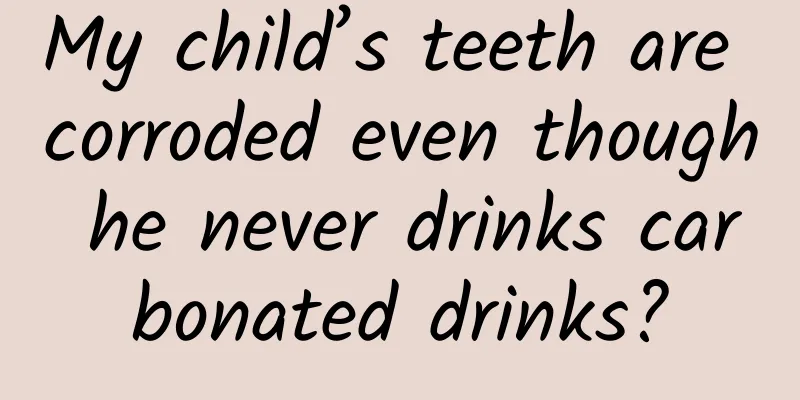Can we predict adult height by cracking the "code" of bone age?

|
Author: Li Kai, attending physician, Beijing Jishuitan Hospital, Capital Medical University Illustration: Sun Xiaoyang, technician at Beijing Jishuitan Hospital affiliated to Capital Medical University Reviewer: Cheng Xiaoguang, Chief Physician, Beijing Jishuitan Hospital, Capital Medical University Bone age is the abbreviation of bone age. As an indicator to evaluate the degree of bone maturity, bone age is widely used in bone examinations of children and adolescents. It is like a clock hidden in our body, recording the development process of bones. Through this clock, we can understand the growth and development status and potential of children. 1. Under what circumstances is it necessary to crack the "password"? Growth Detective: Bone age testing can be used to determine the growth and development of children and adolescents, and to understand children's growth and development potential and sexual maturity trends. Height predictor: Bone age testing helps predict the final height of minors and provides a basis for early intervention. Disease Assistant: Abnormal bone age may be a signal of some pediatric endocrine diseases. Therefore, detecting bone age has important reference value for the diagnosis of some pediatric endocrine diseases. Orthodontic guide: Generally speaking, the effect of orthodontic treatment before the growth spurt is more obvious. Bone age testing can provide a reference for choosing the timing of orthodontic treatment. Athlete selection expert: Bone age testing is an important reference for selecting young athletes; bone age testing is sometimes also used to confirm the eligibility of young athletes to participate in competitions. A little magic tool for criminal investigation: Bone age testing can sometimes help criminal investigation and forensic identification, and is mainly used to assist in determining the age of minors. 2. What factors affect the "password"? Physiological factors: Gender, age and other factors will affect bone age. Genetic factors: Bone age is related to family heredity, including race and individual differences. Pathological factors: Nutritional status, endocrine environment, and disease status may cause bone age to "lie". For example, being overweight or obese will increase the risk of early bone age, while being thin will increase the risk of delayed bone age; diseases such as adrenal hyperplasia or tumors, McCune-Albright syndrome, precocious puberty, hyperthyroidism, and ovarian granulosa cell tumors will lead to early bone age, while diseases such as ovarian dysgenesis (Turner syndrome), chondrodysplasia, pituitary dwarfism, and hypothyroidism will lead to delayed bone age. Geographical factors: There are certain differences in geographical environment, economic level, dietary structure and other factors between different regions, cities and rural areas, and the degree of bone development in children will also vary. Exercise and sleep: Sleep helps the release of growth hormone, and physical exercise is beneficial to the calcium and phosphorus metabolism of bones and the whole body. Ensuring adequate sleep and regular physical exercise can help promote bone development. Assessment method: Different bone age assessment methods may produce different results due to different reference standards. What are the methods to crack the "password"? X-ray: Take an X-ray of the left wrist in the frontal position, and determine the bone age by observing the morphological characteristics of the ossification center of the left wrist. This is the most mature and commonly used method for detecting bone age. With the development of imaging equipment technology, the emergence of portable bone age-specific X-ray acquisition equipment has made the shooting of left wrist X-rays no longer restricted by the venue of medical institutions. It can be carried out uniformly in kindergartens, schools, childcare institutions, etc., which is convenient for centralized investigation and research (Figure 1). Dual-energy X-ray absorptiometry: By irradiating the subject with two types of X-rays with different energies, the histological differences between soft tissue and bone tissue are used, and computer data processing is performed to obtain images for bone age assessment. It is more effective than traditional X-rays in short-term assessments of children's bone maturity, but it is time-consuming, complicated, expensive, and inaccurate. Ultrasound: Bone age is estimated based on the structural changes of wrist cartilage during ossification and the different speeds at which ultrasound waves pass through the wrist joint. Its advantage is that it does not cause ionizing radiation and is very safe; its disadvantage is that the accuracy of the results still needs to be tested. Magnetic resonance imaging: Magnetic resonance imaging is used to assess bone age. It has no ionizing radiation, is highly accurate, and can display epiphyseal cartilage with high resolution. However, it is expensive, difficult to operate, takes a long time to collect, is noisy, is inefficient, and has relatively many contraindications. Figure 1 Schematic diagram of left wrist X-ray film (A, medical X-ray machine; B, portable bone age X-ray machine) Figure 1 Original copyright image, no permission to reprint 4. How to interpret the “secret code” of X-ray bone age? Greulich-Pyle hand and wrist bone age atlas method: The atlas method compares the bone age X-ray with the standard bone age films of different age groups, and the age corresponding to the closest standard film is determined as the bone age. If there is no closest standard film, the insertion method is used to take the middle value of the two standard films as the bone age. The atlas method is simple and convenient to operate, but the accuracy is not high. Tanner-Whitehouse scoring (TW scoring): TW scoring was created in 1962 and updated to TW3 in 2001. This method calculates the developmental maturity scores of the ulna, radius, metacarpals, and phalanges, and includes the scores of the 20 major bones of the hand and wrist into the total score. It is a bone-specific scoring technique. Its advantage is that the maturity differences between bones are statistically minimized, and the results are objective and accurate. The disadvantage is that it takes a relatively long time. Percentage counting method: In the 1960s, Beijing experts developed an evaluation method for calculating bone maturity using healthy children in Beijing as samples, and provided line drawings and bone age comparison tables, which was called the "percentage counting method." Since the children's samples were collected at an early time, this method is no longer suitable for current bone age assessment. Chinese wrist bone development standard (CHN method): The CHN method is a bone age assessment method established by a team of experts in my country using ordinary healthy children of the Han nationality in large and medium-sized cities in China in the late 1980s as samples. In 1992, it was approved by the State Sports Commission to become my country's first industry standard for bone age evaluation (TY/T 001-1992) and has been widely used. Maturity and evaluation method of wrist bones in Chinese adolescents and children ("Zhonghua-05" standard): Based on the internationally accepted TW3 scoring method and combined with the bone age development characteristics of contemporary Chinese children, in 2005 Chinese scholars established the "Zhonghua-05" bone age evaluation method, which was approved as a new industry standard (TY/T 3001-2006) and became the mainstream method for bone age assessment in my country. Artificial intelligence technology: With the development of science and technology, the use of artificial intelligence systems to automatically or semi-automatically assess bone age has gradually become a hot topic. Artificial intelligence can achieve rapid processing of image data through deep learning, achieve fatigue-free diagnosis, and reduce the misdiagnosis rate. The most widely used internationally is the European automatic bone age assessment software BoneXpert. There are many bone age assessment software in China, but because of the different interpretation methods and sources of children's samples, the degree of use and recognition in various medical institutions is not the same. 5. Is it safe to crack the “password” using X-rays? Bone age is assessed by taking X-rays of the left wrist. The radiation dose for each test is approximately 0.01mSv (Note: mSv is the unit of radiation dose), which is about 1/200 of the natural sunlight radiation dose received by each person per year (the natural sunlight radiation received by each person in a normal year is about 2-3 mSv). The radiation dose is absolutely safe. 6. Can cracking the “code” predict adult height? Bone growth is achieved through the continuous division, proliferation and ossification of epiphyseal cartilage cells. Only when epiphyseal cartilage cells continue to divide and proliferate can bones maintain their growth potential and height continue to grow. When we detect bone age, as long as the epiphysis of the long bones of the wrist are not completely fused with the shaft (Figure 2), we have the possibility of growing taller. Therefore, predicting adult height by detecting bone age has a certain scientific basis. However, there are many factors that affect adult height. In addition to congenital genetic factors, adult height is also related to acquired nutrition, diet, environment, physical exercise, sleep, psychology and other factors. No matter which prediction method is used, it is impossible to include all influencing factors for estimation. Although these prediction methods have a certain scientific basis, the prediction results will inevitably have errors. The real significance of detecting bone age is that as long as the epiphysis is not completely closed, you can continue to intervene and improve in exercise, nutrition, sleep and other aspects in order to obtain an ideal adult height. Figure 2 Schematic diagram of the bones of a child's left wrist (the yellow area shows the epiphysis of the long bones of the wrist) Figure 2 Original copyright image, no permission to reprint |
<<: Does heading the ball in football really affect the brain?
Recommend
Bug alert! The bugs that have been hiding for the winter are coming out!!!
Audit expert: Li Weiyang Well-known science write...
To operate a great website, you must first become a good "psychologist"!
This article does not share too many practical sk...
Mycoplasma outbreak in China? Maybe it's just an illusion
The incidence of false negative and false positiv...
Socket read and write errors, Baidu resource platform crawl diagnostic prompt error solution
The following error message appears in the Baidu ...
How to build a product data indicator system?
Today we will focus on sharing with you the North...
Drinking whole milk can make you fat? It turns out you've been doing it wrong all along! Here's how to drink milk the right way
Myth: "Drinking whole milk makes you fat and...
New Media Operation丨How to operate self-media platforms such as Toutiao and Baijiahao?
Today I will share with you how to become a novic...
Automobile maintenance information collection of high-quality resources Baidu network disk download
Automobile maintenance information collection of ...
Microsoft is confident that Windows 10 can reverse the decline
In fact, this topic has been brought up constantl...
15 winter solstice copywriting ideas, I didn’t expect this wave to be so outstanding!
Winter Solstice is the day with the shortest day ...
What are the SEO marketing methods?
As the saying goes, "Even good wine needs to...
Wuhan tea tasting, the most complete guide to tea tasting in 2022, the most reliable place in Wuhan
The contact information for Wuhan tea tasting is ...
The "money prospects" of the Internet of Vehicles attract giants to compete for the rapid development of intelligent connected vehicles
Recently, the Ministry of Industry and Informatio...
Go exercise in the spring, but be careful, the harder you exercise, the more "injured" you will be...
Take off the down jacket! The woolen coat is off!...









